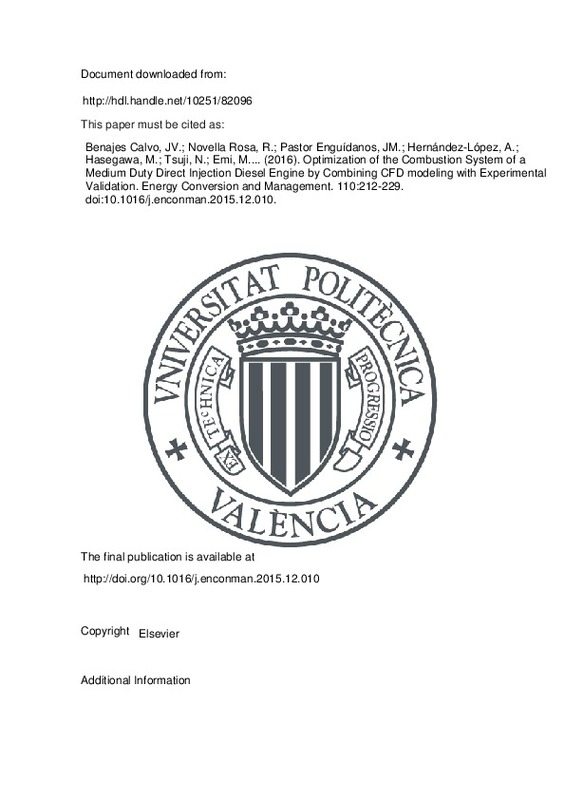|
Resumen:
|
The research in the field of internal combustion engines is currently driven by the needs of decreasing fuel consumption and CO2 emissions, while fulfilling the increasingly stringent pollutant emissions regulations. In ...[+]
The research in the field of internal combustion engines is currently driven by the needs of decreasing fuel consumption and CO2 emissions, while fulfilling the increasingly stringent pollutant emissions regulations. In this framework, this research work focuses on describing a methodology for optimizing the combustion system of compression ignition (CI) engines, by combining computational fluid dynamics (CFD) modeling, and the statistical Design of Experiments (DOE) technique known as Response Surface Method (RSM). As a key aspect, in addition to the definition of the optimum set of values for the input parameters, this methodology is extremely useful to gain knowledge on the cause/effect relationships between the input and output parameters under investigation.
This methodology is applied in two sequential studies to the optimization of the combustion system of a 4-cylinder 4-stroke Medium Duty Direct Injection (DI) CI engine, minimizing the fuel consumption while fulfilling the emission limits in terms of NOx and soot. The first study targeted four optimization parameters related to the engine hardware including piston bowl geometry, injector nozzle configuration and mean swirl number (MSN) induced by the intake manifold design. After the analysis of the results, the second study extended to six parameters, limiting the optimization of the engine hardware to the bowl geometry, but including the key air management and injection settings. For both studies, the simulation plans were defined following a Central Composite Design (CCD), providing 25 and 77 simulations respectively.
The results confirmed the limited benefits, in terms of fuel consumption, around 2%, with constant NOx emission achieved when optimizing the engine hardware, while keeping air management and injection settings. Thus, including air management and injection settings in the optimization is mandatory to significantly decrease the fuel consumption, by around 5%, while keeping the emission limits.
[-]
|







![[Cerrado]](/themes/UPV/images/candado.png)


